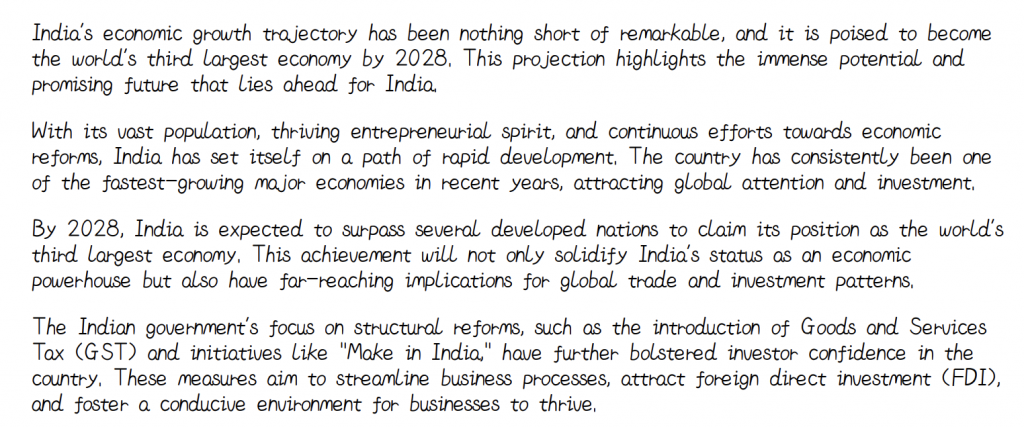Economic Outlook of India in 2028
Summary:
The Economic Outlook of India in 2028 discusses India’s promising economic growth trajectory. The document projects that India will become the world’s third-largest economy by 2028, surpassing several developed nations. This growth is attributed to a large population, a thriving entrepreneurial spirit, and ongoing economic reforms like the Goods and Services Tax (GST) and “Make in India” initiatives. These reforms aim to streamline business processes and attract foreign direct investment.
India’s demographic dividend, characterized by a young workforce and a growing middle class, presents significant domestic consumption growth opportunities. Challenges like infrastructure development and skill enhancement remain, but the country is well-positioned for significant economic growth in the coming years. The paper concludes that India’s rise to the third-largest economy will signify its progress and a shift in global economic dynamics, offering new opportunities for businesses and investors.
Excerpt:
Economic Outlook of India in 2028
India’s economic growth trajectory has been remarkable, and it is poised to become the world’s third-largest economy by 2028. This projection highlights the immense potential and promising future that lies ahead for India.
With its vast population, thriving entrepreneurial spirit, and continuous efforts towards economic reforms, India has set itself on a path of rapid development. The country has consistently been one of the fastest-growing major economies in recent years, attracting global attention and investment.
By 2028, India is expected to surpass several developed nations to claim its position as the world’s third-largest economy. This achievement will not only solidify India’s status as an economic powerhouse but also have far-reaching implications for global trade and investment patterns.
The Indian government’s focus on structural reforms, such as the introduction of Goods and Services Tax (GST) and initiatives like “Make in India,” have further bolstered investor confidence in the country. These measures aim to streamline business processes, attract foreign direct investment (FDI), and foster a conducive environment for businesses to thrive.


Reviews